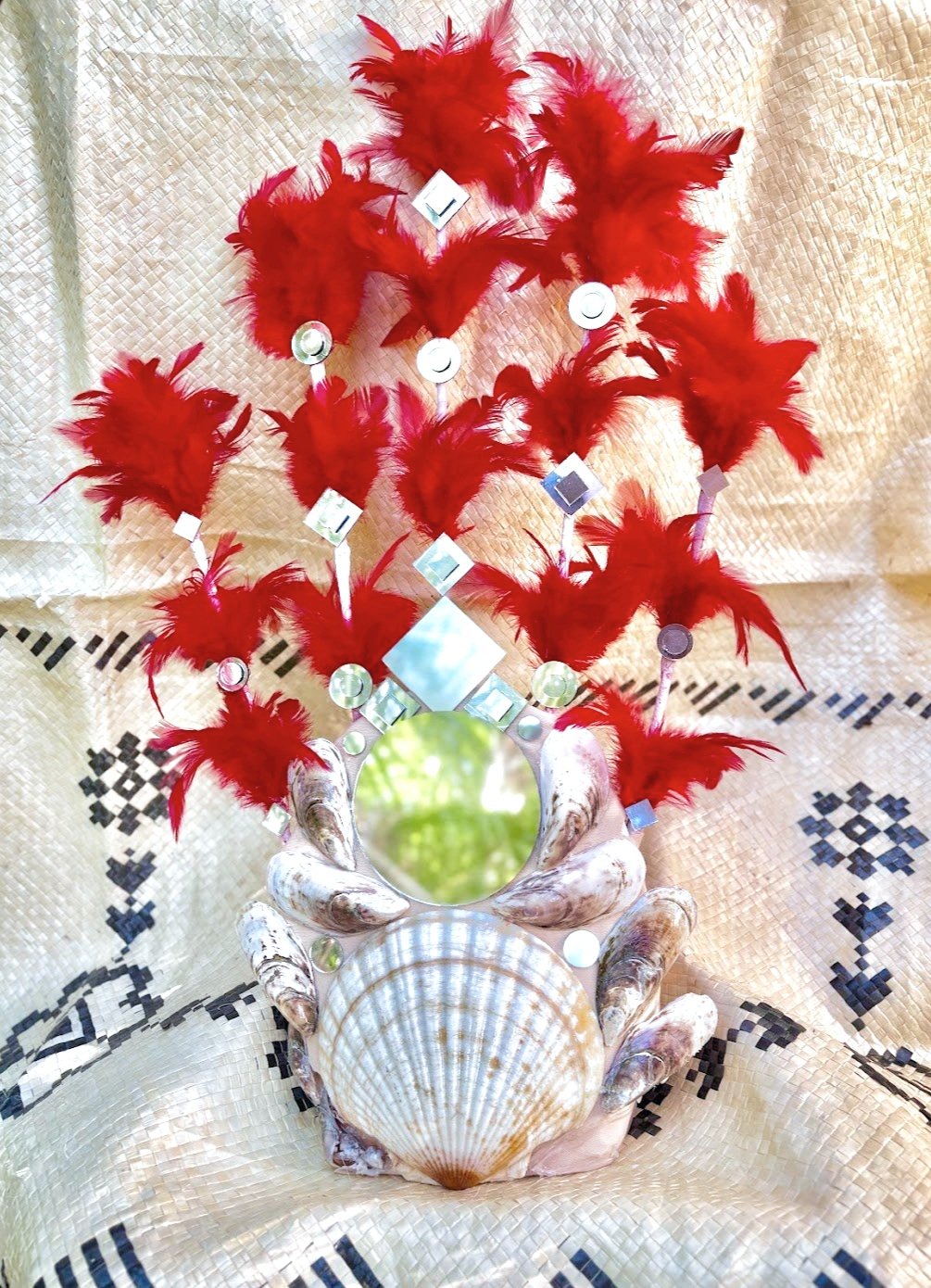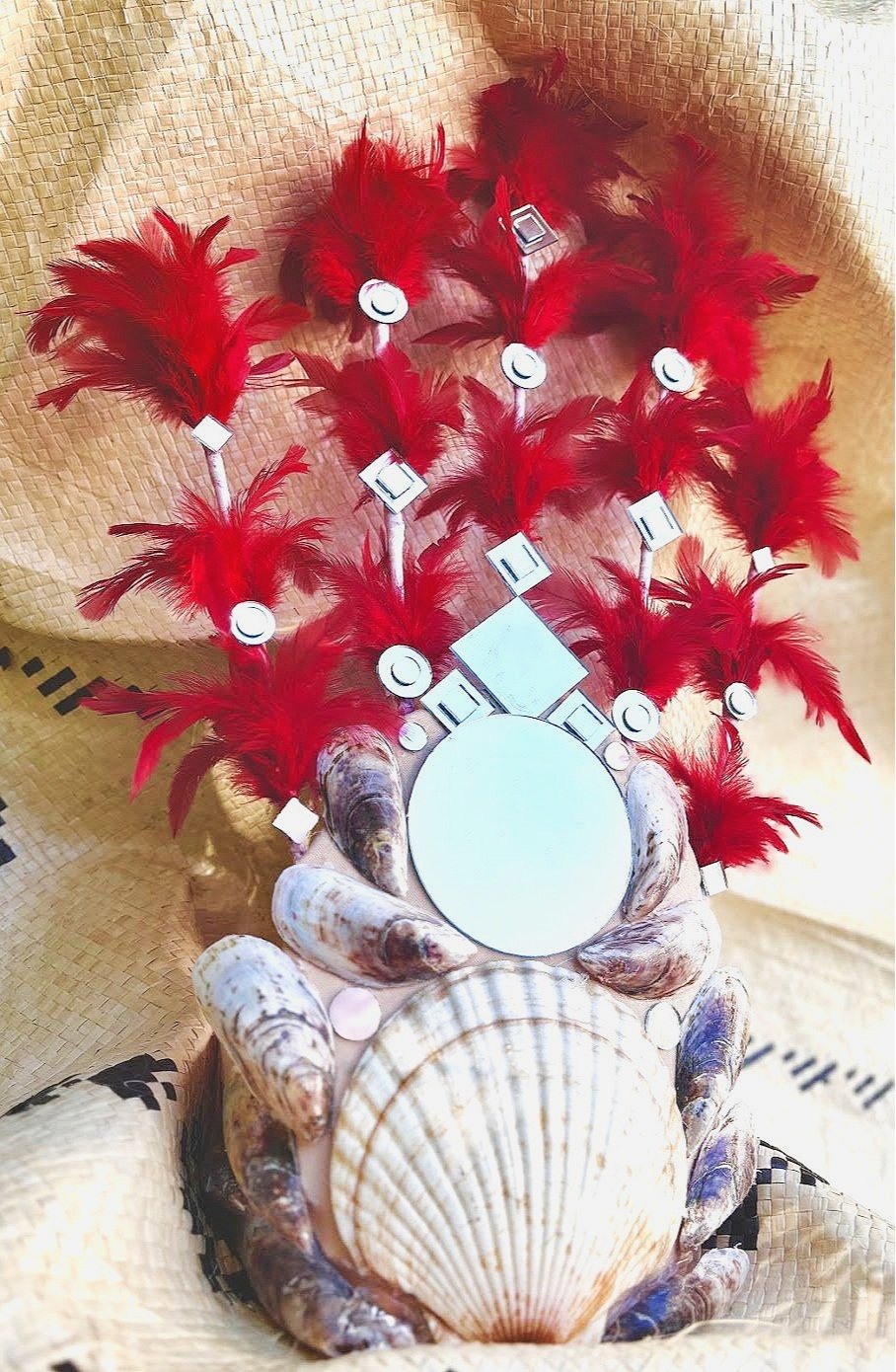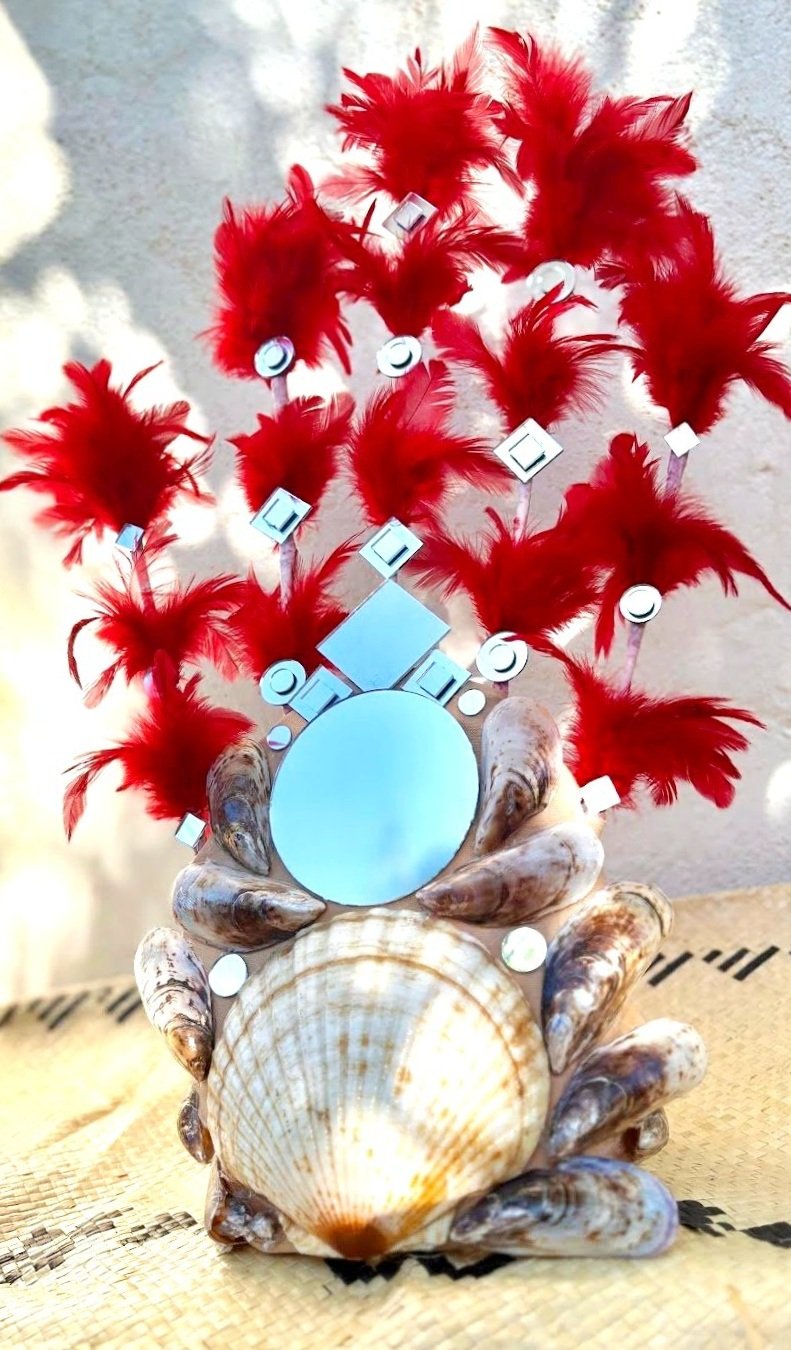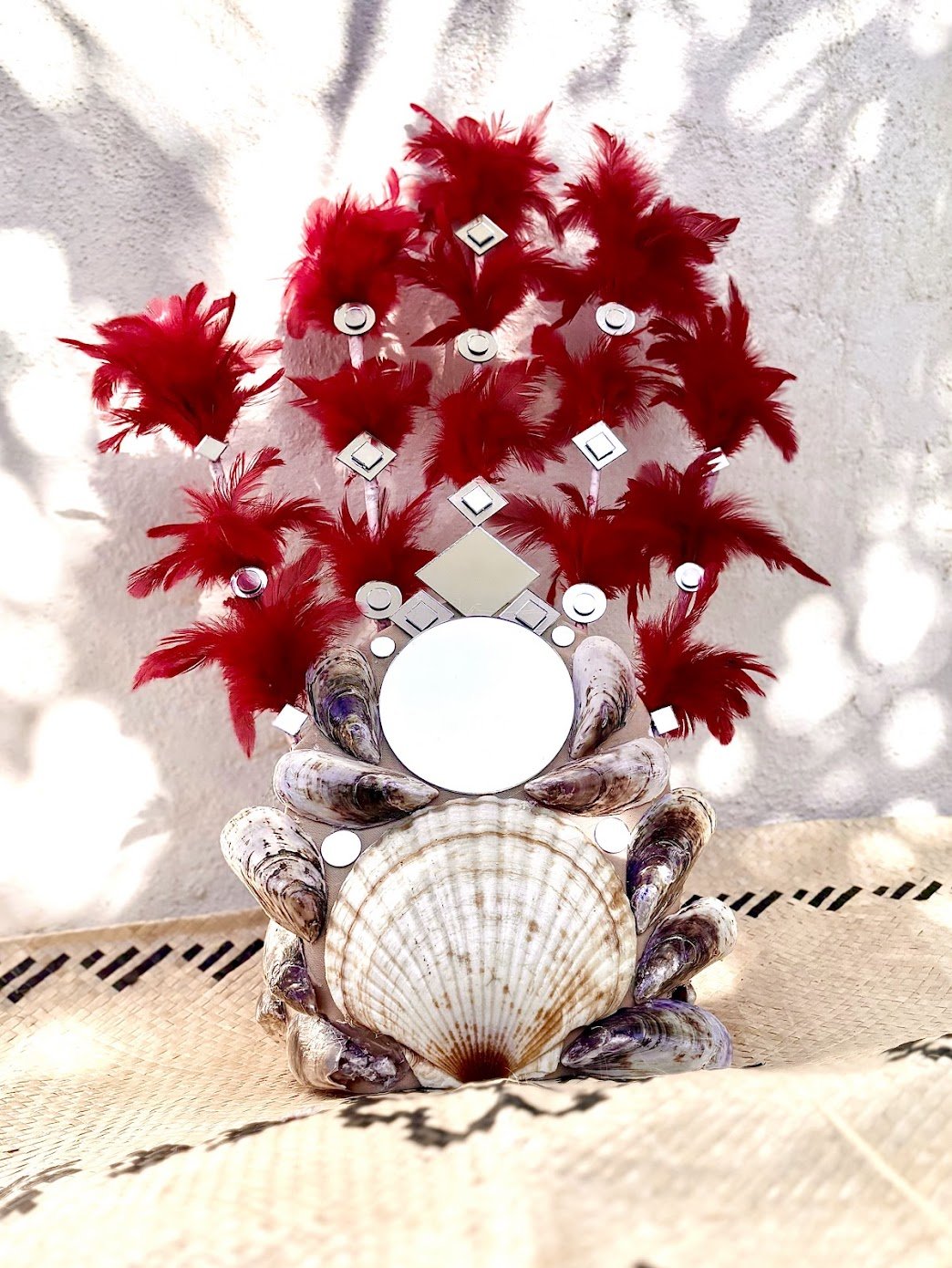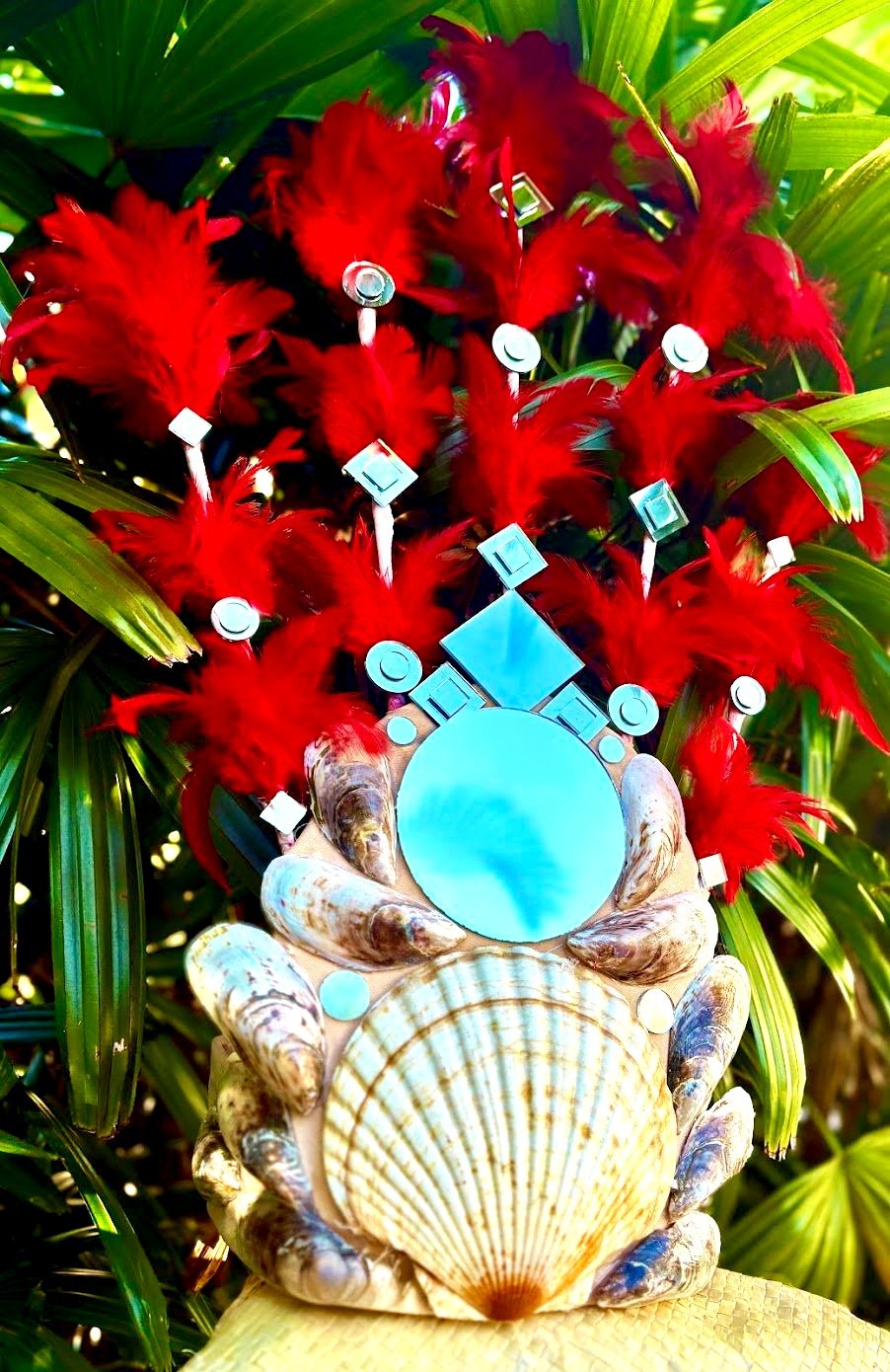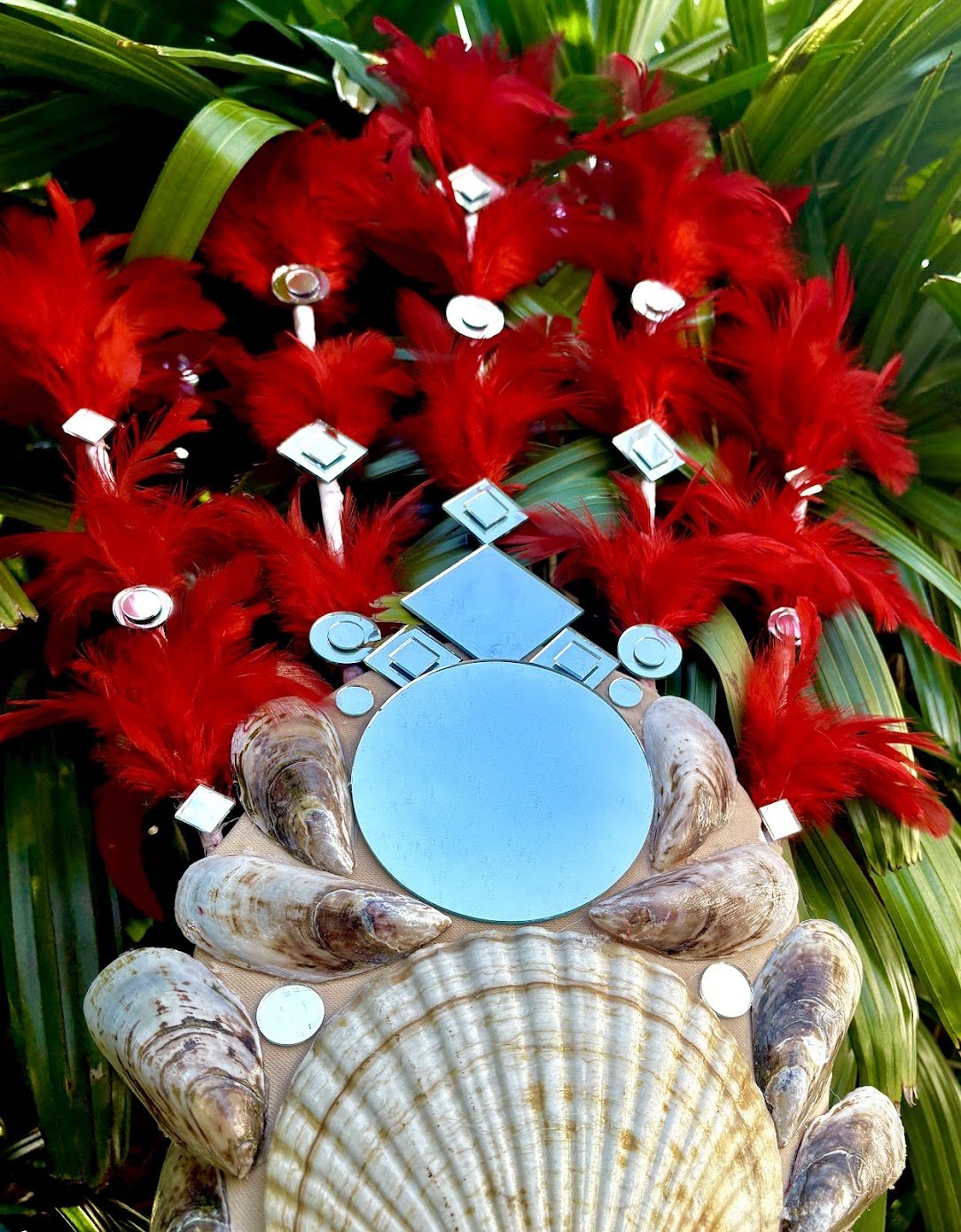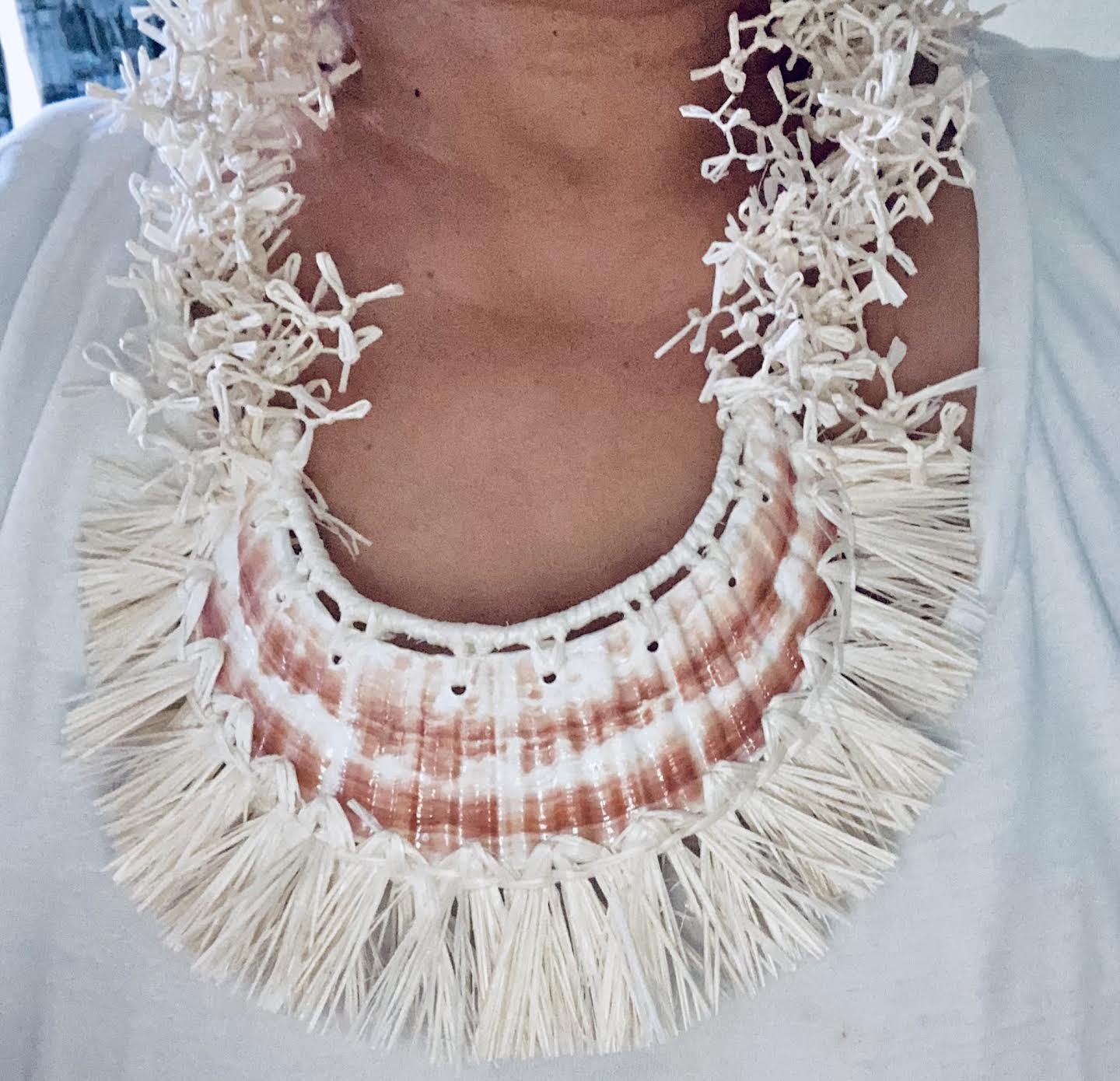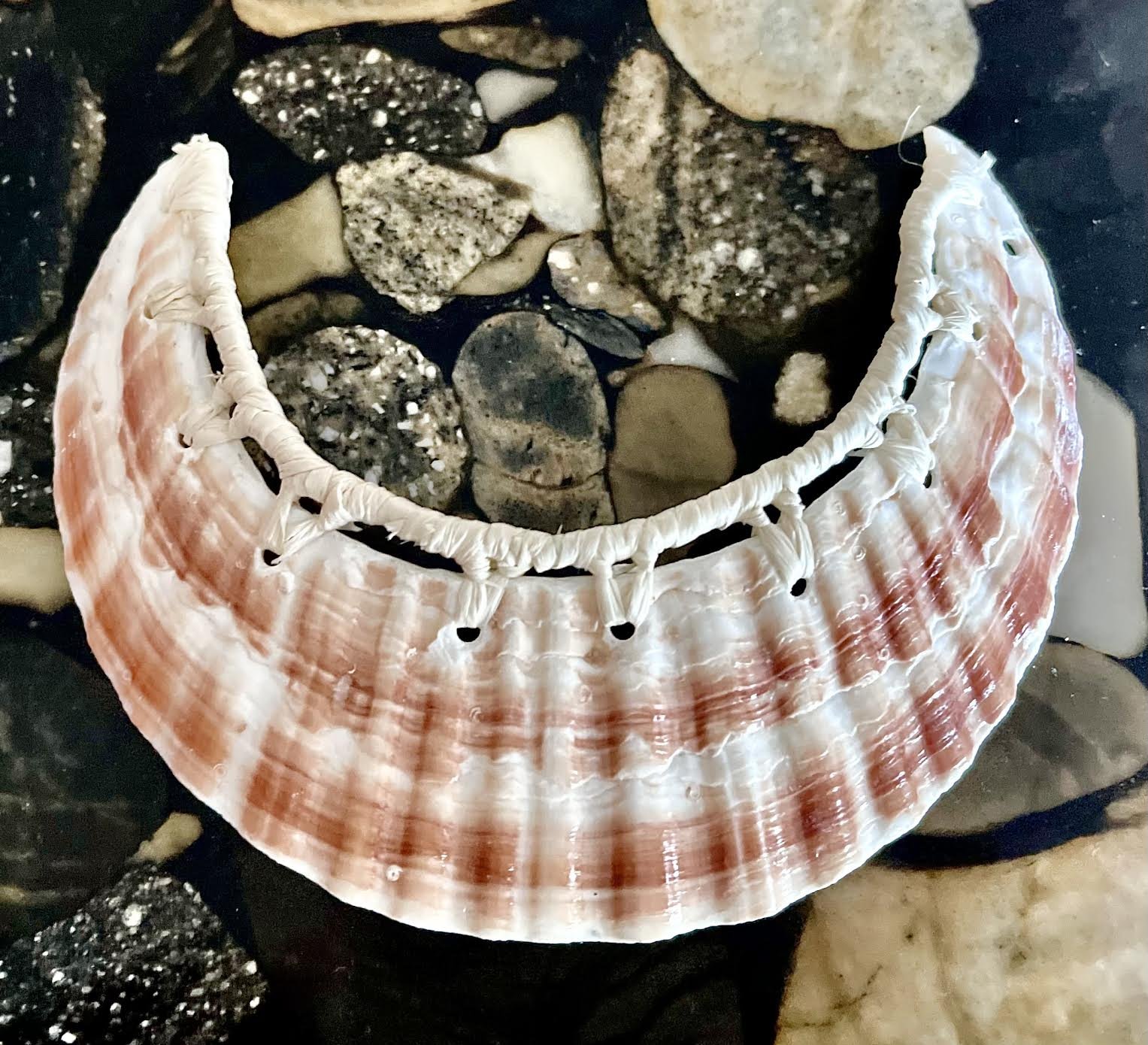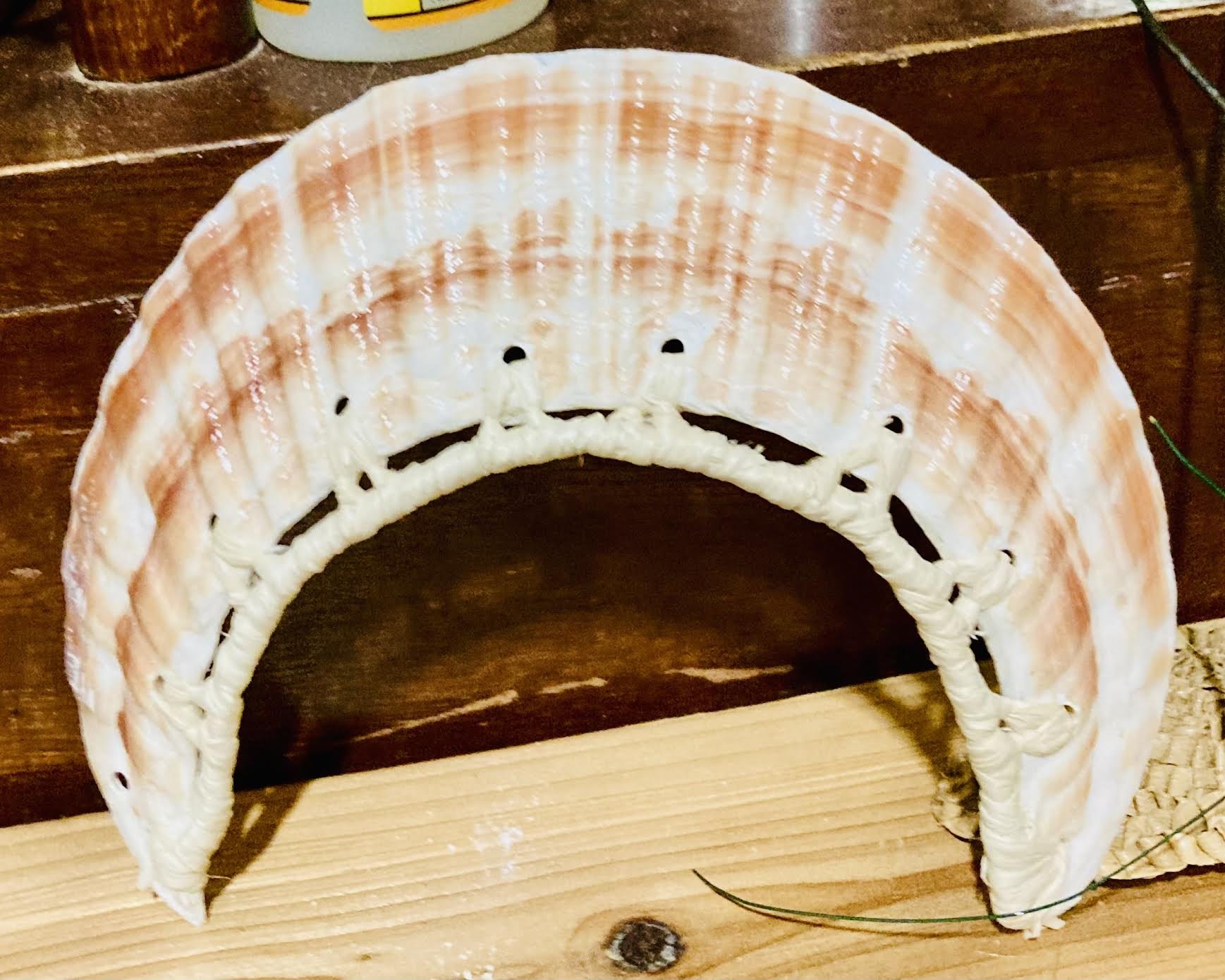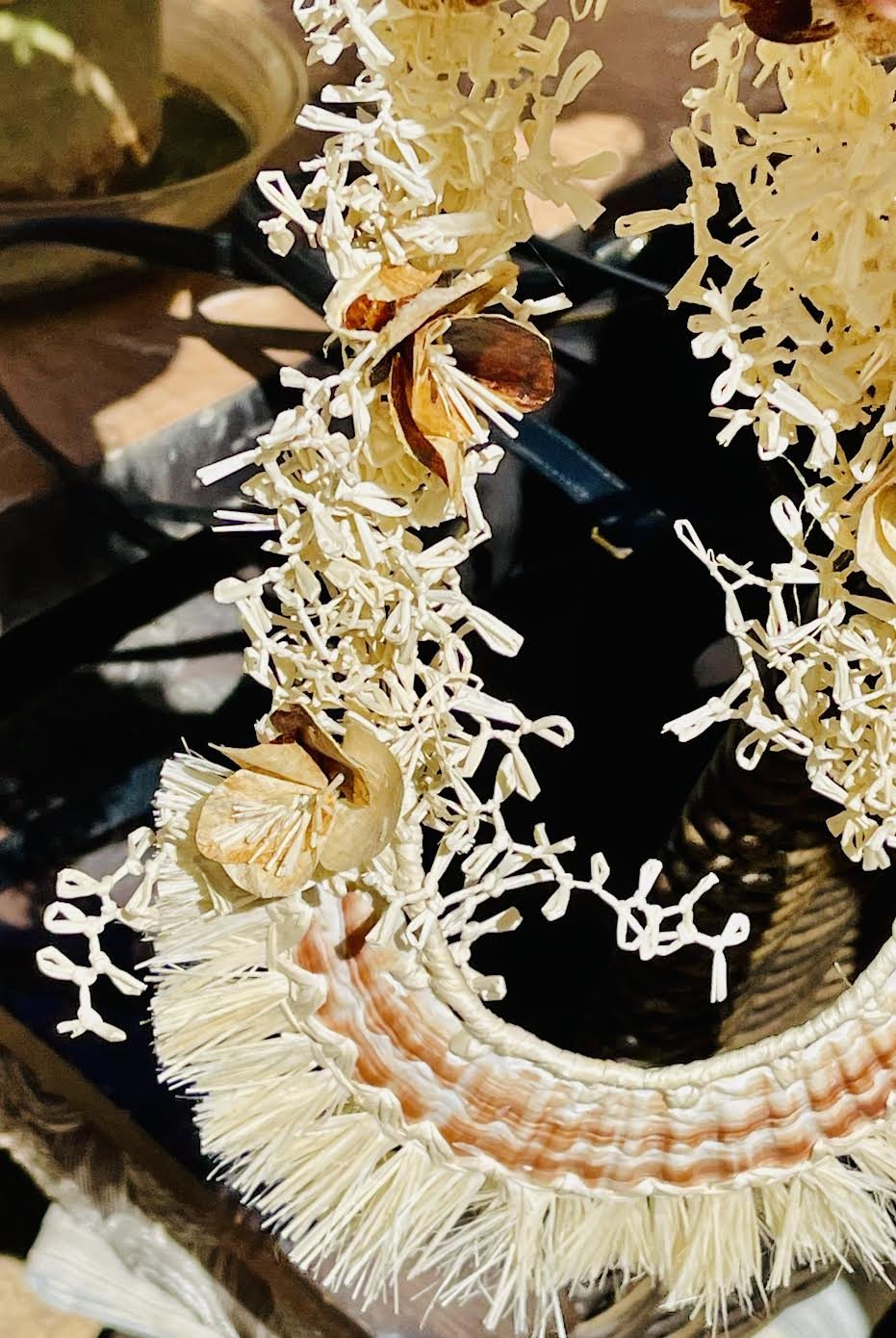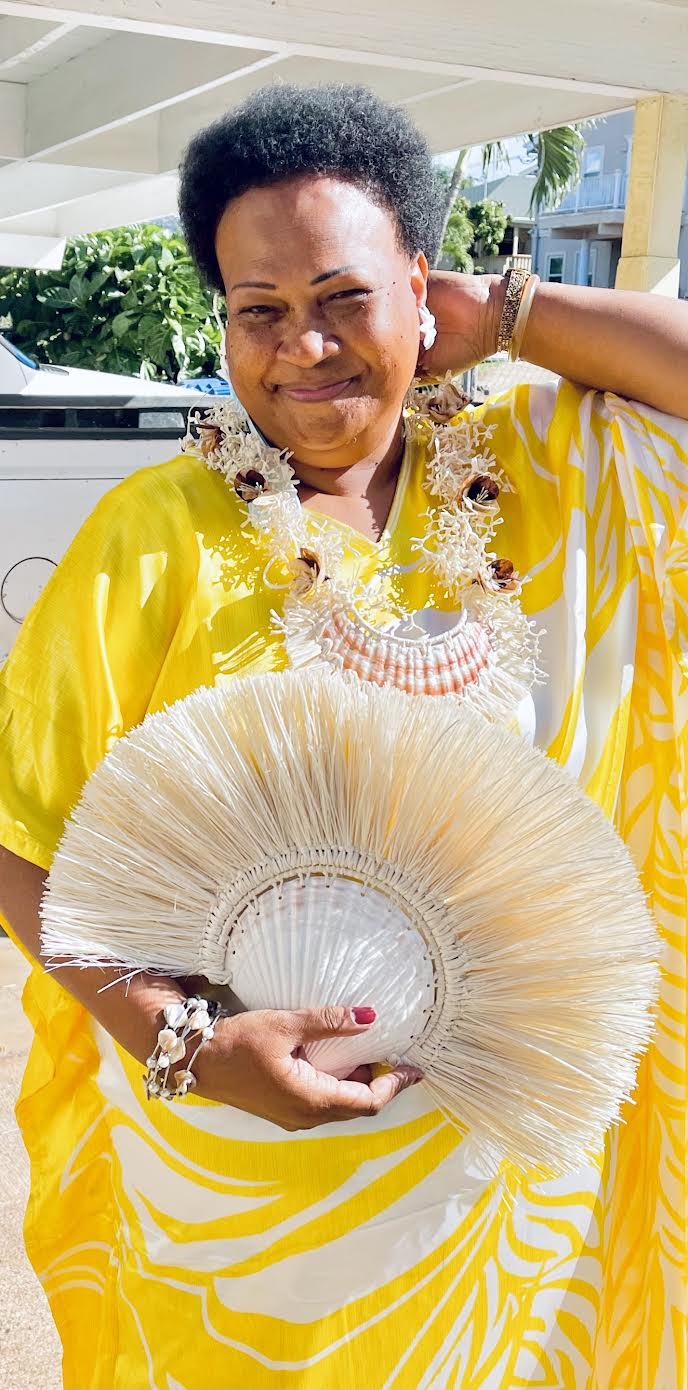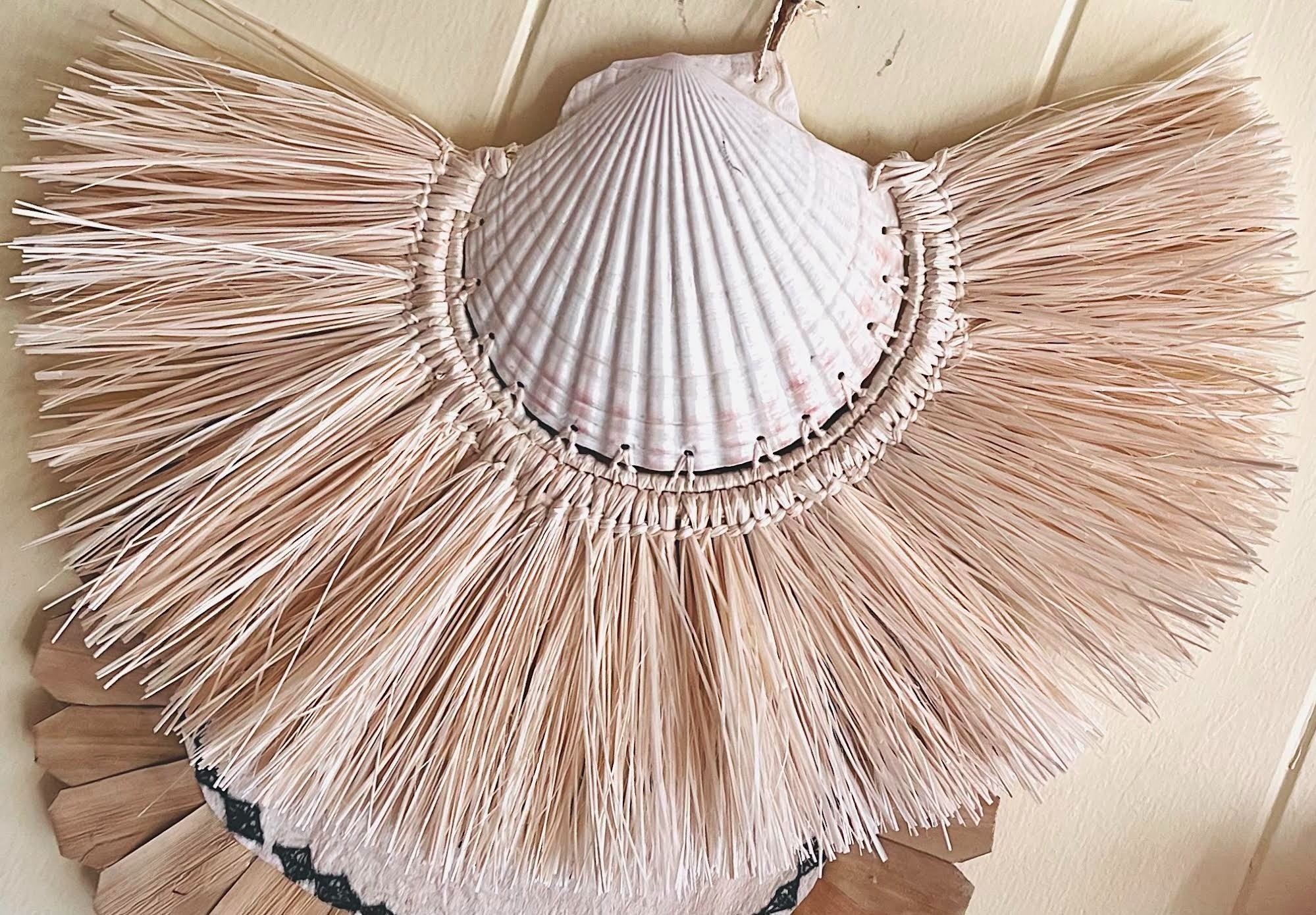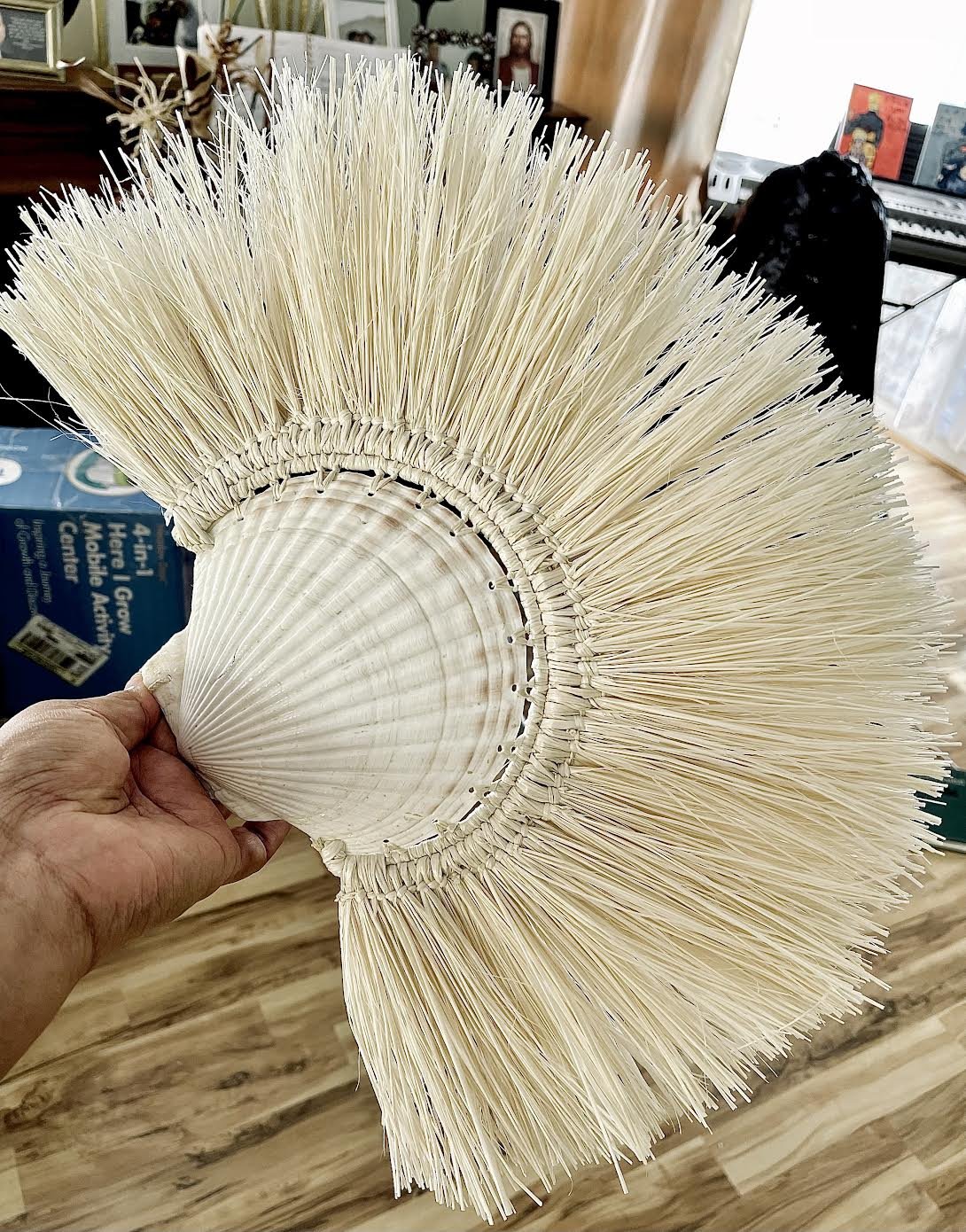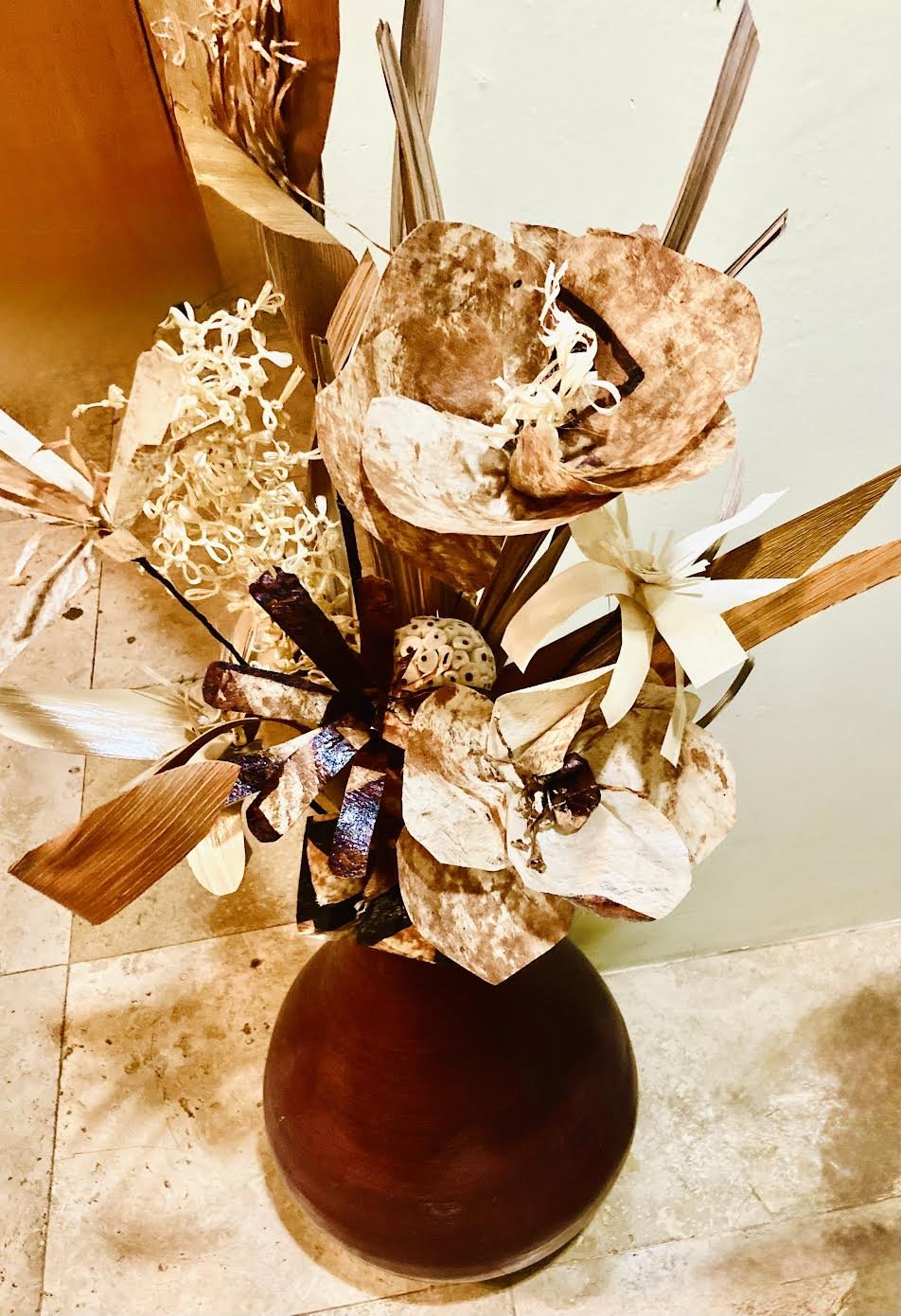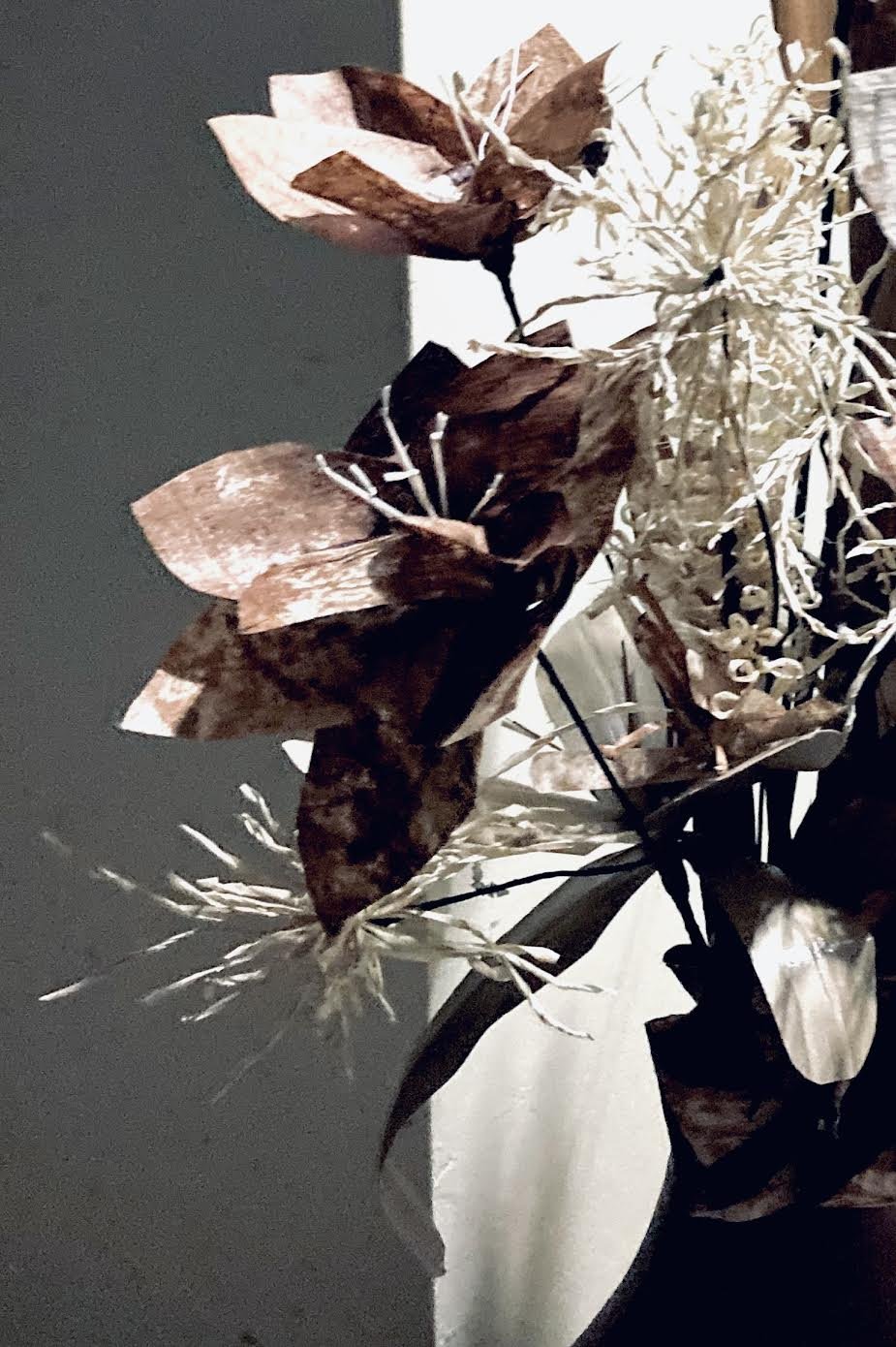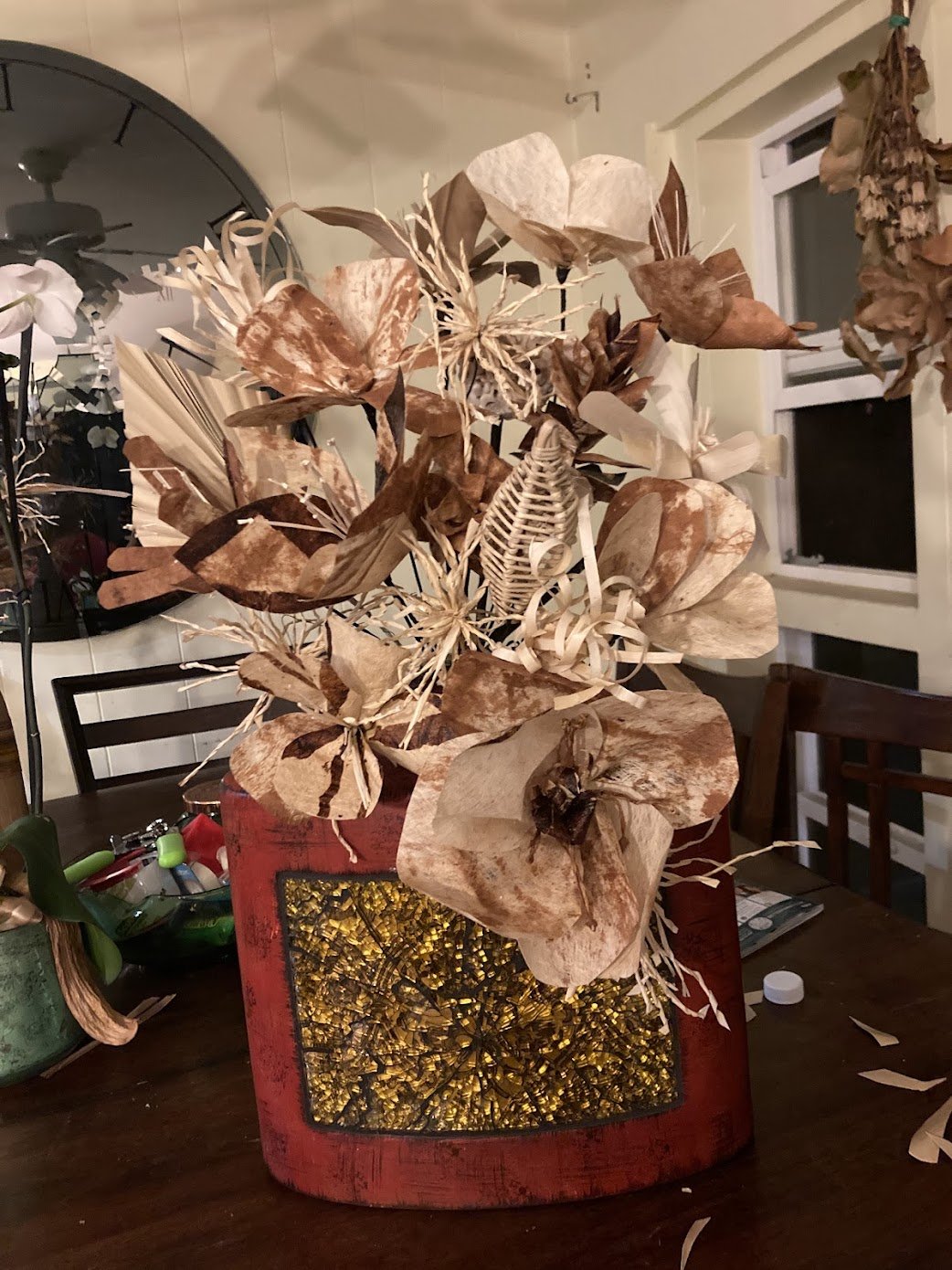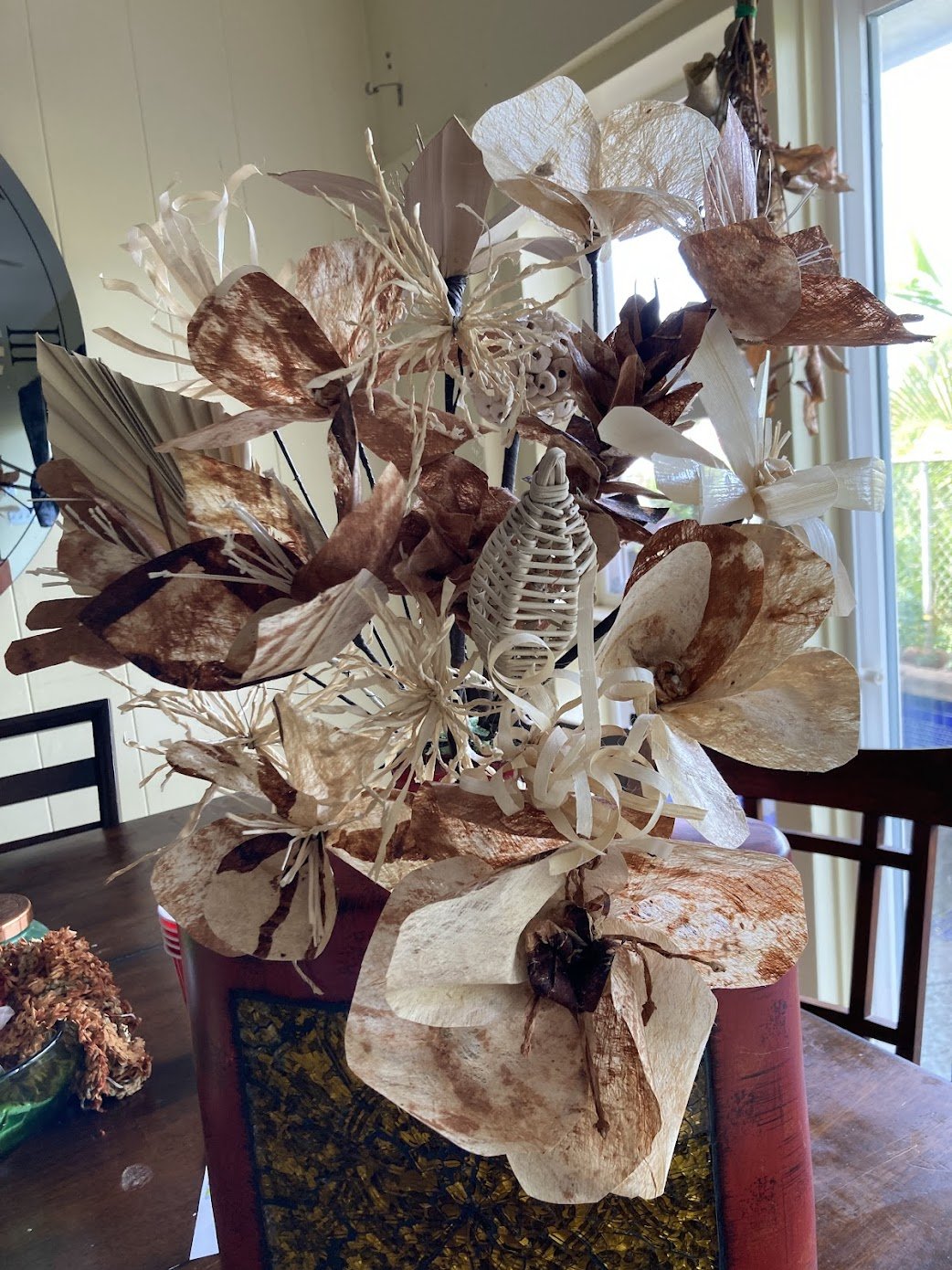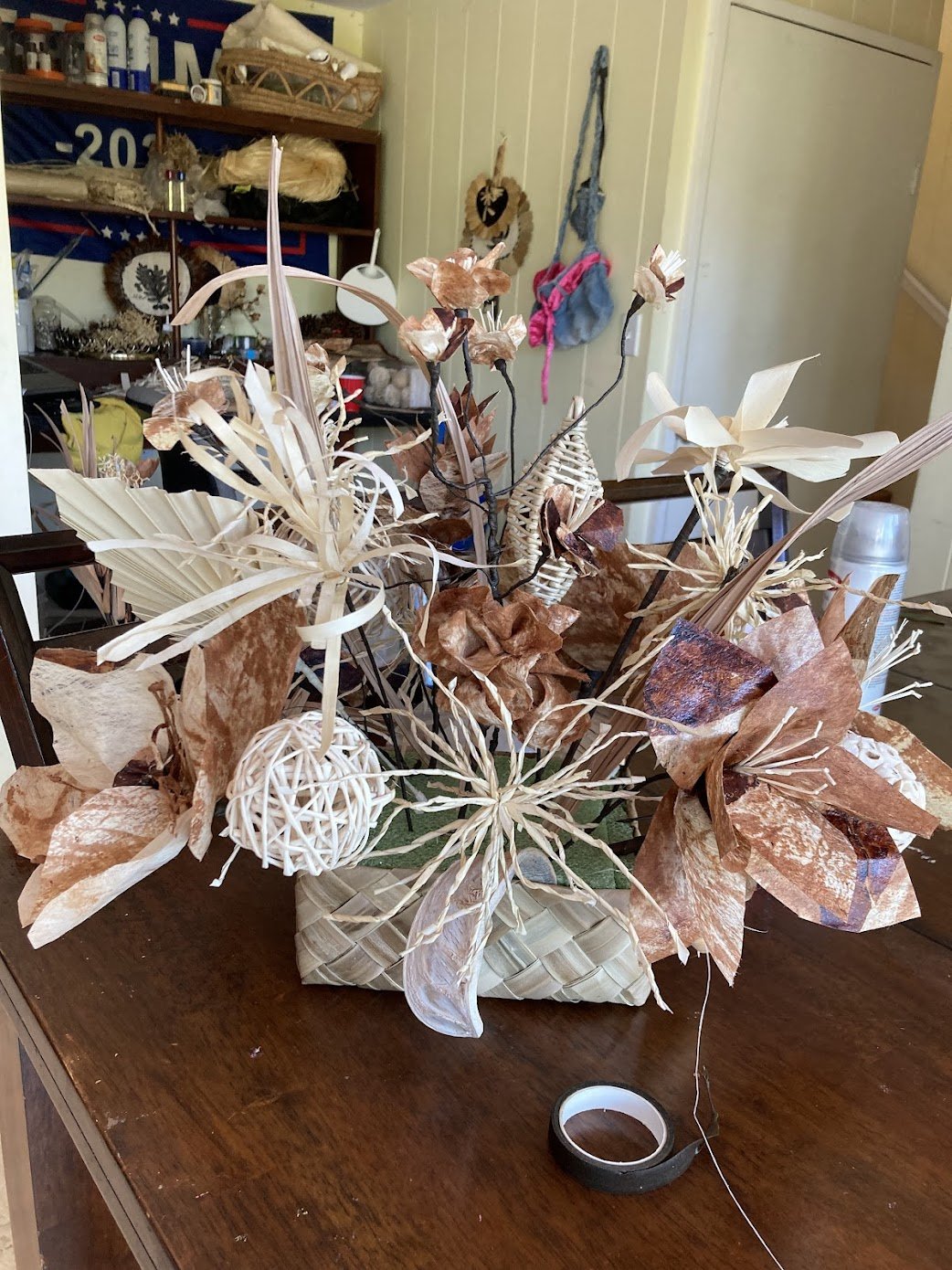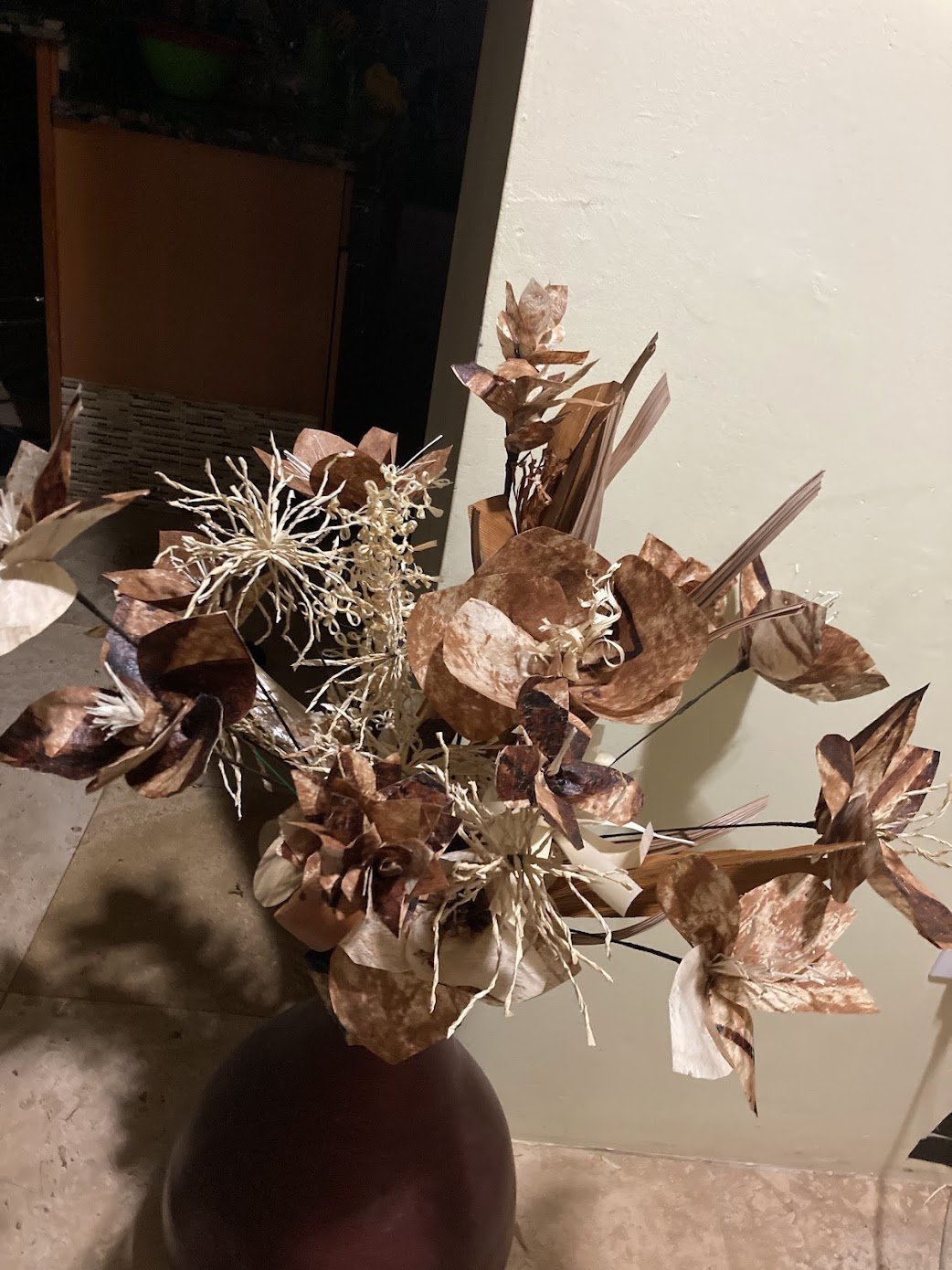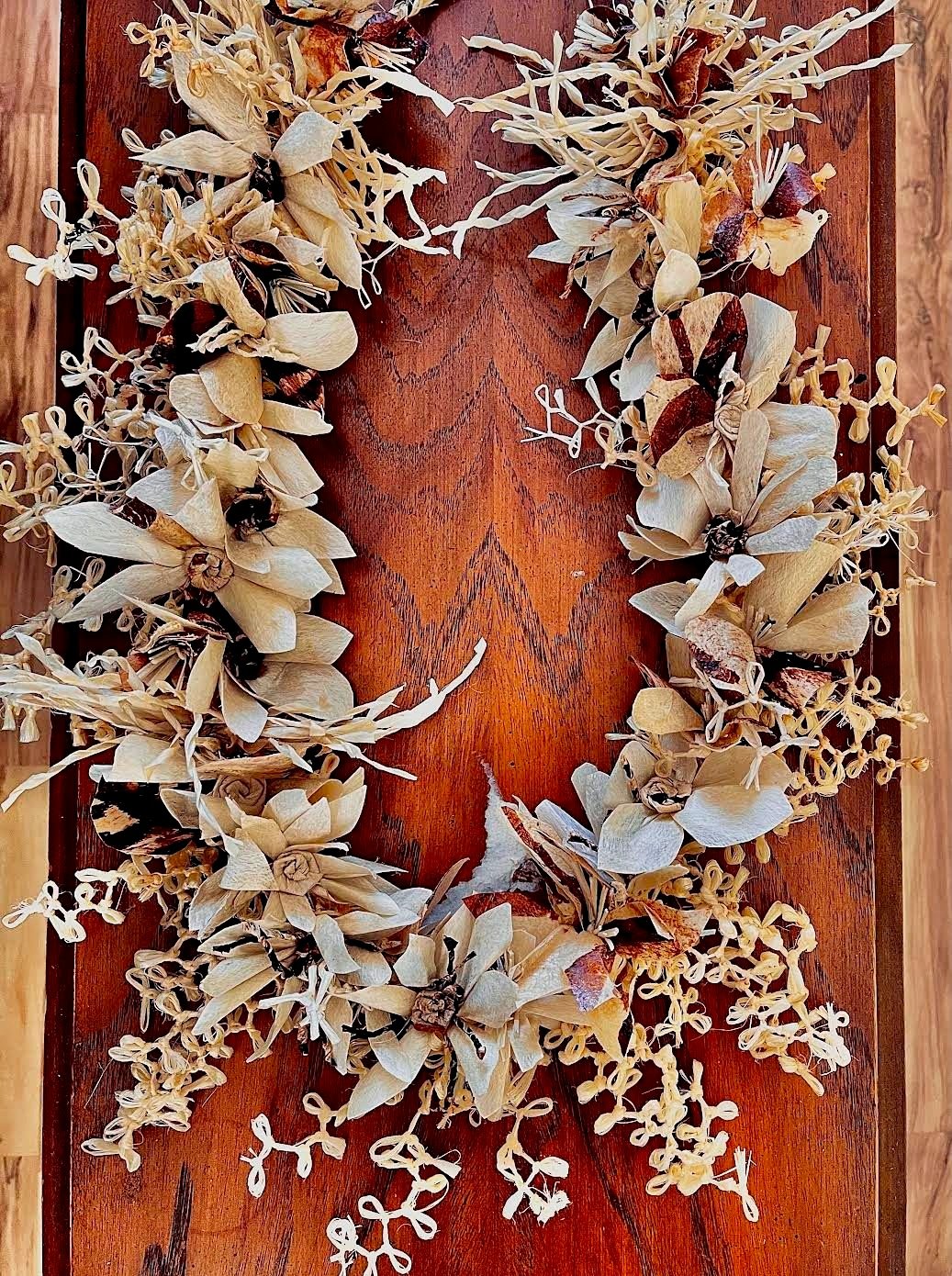 Image 1 of 4
Image 1 of 4

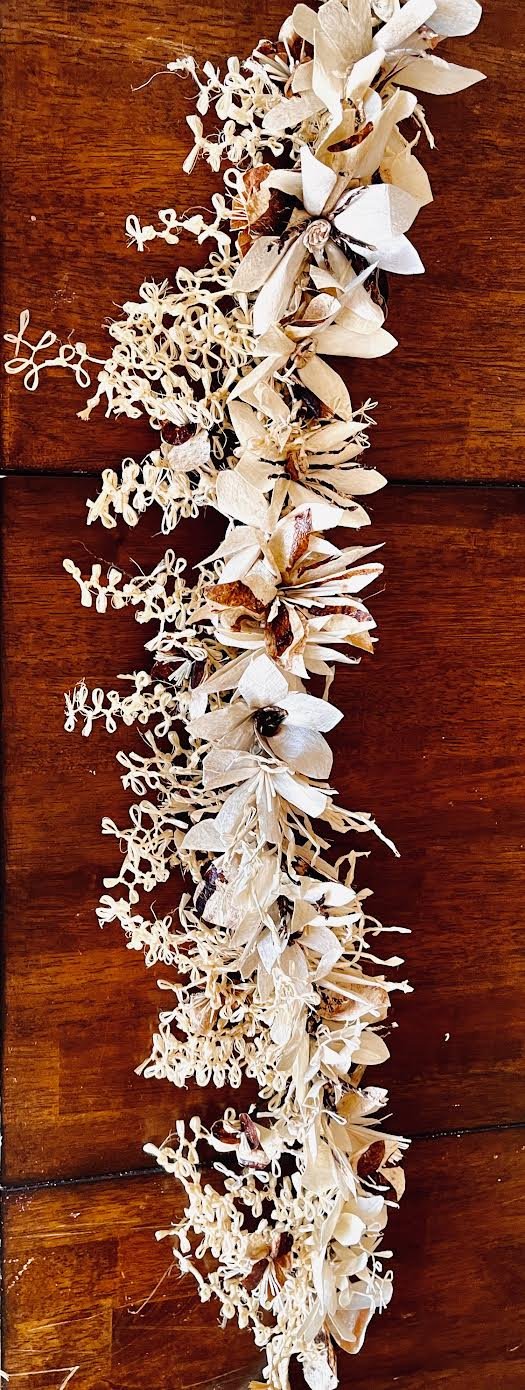 Image 2 of 4
Image 2 of 4

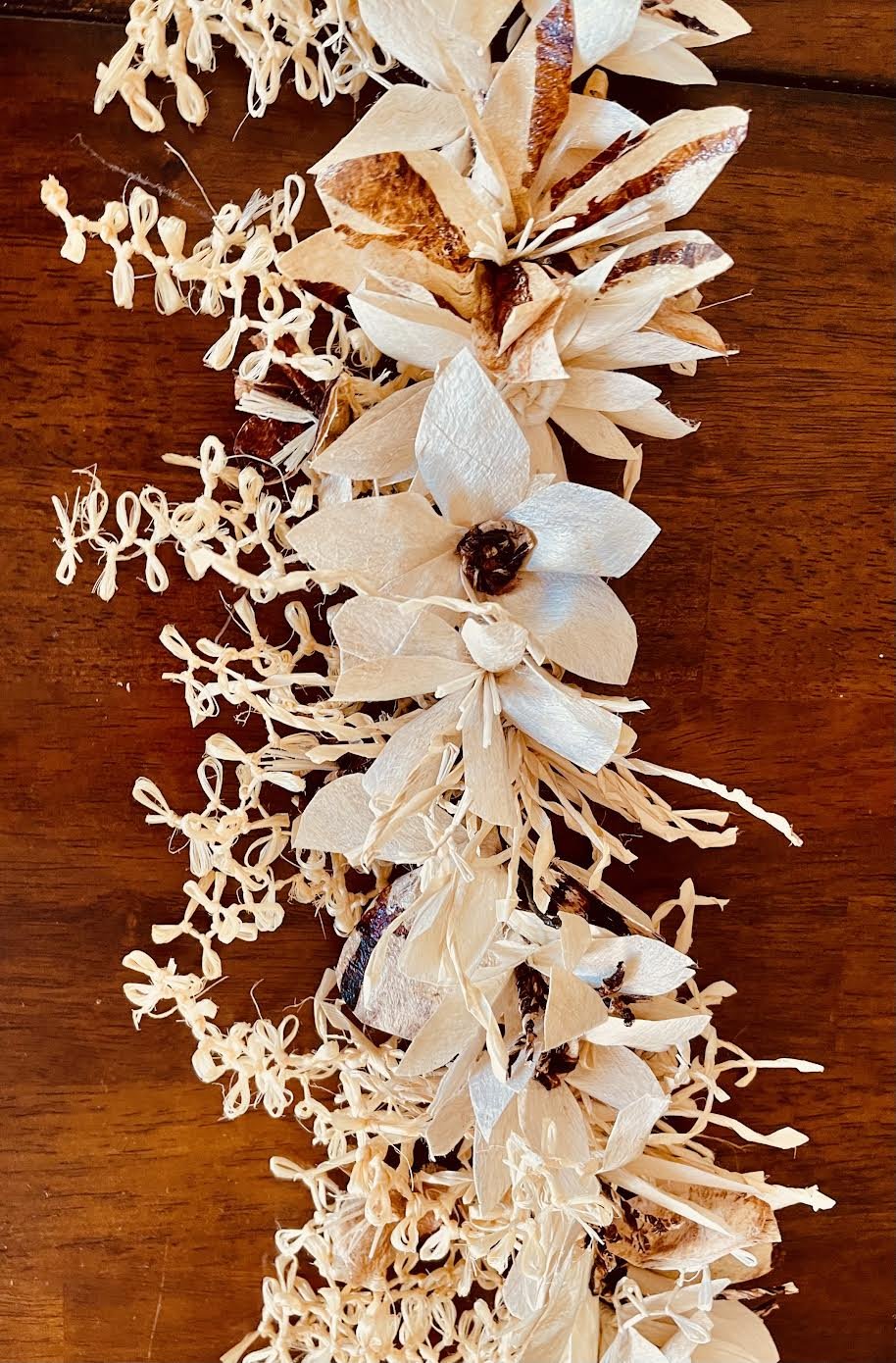 Image 3 of 4
Image 3 of 4

 Image 4 of 4
Image 4 of 4





Nola K - Headpiece and Necklace/Kahoa/Lei made out of Traditional Tapa and coconut matter
Traditionally, tapa is a fabric made from the bark of trees, predominantly found in the Pacific Islands. The process of creating tapa involves careful stripping, soaking, and beating of the bark to produce a pliable material that can be dyed and patterned. In contemporary crafts, tapa has taken on new life, particularly in the creation of unique headpieces and floral designs.
Creating the Headpiece or Necklace
A headpiece and necklace are made from traditional tapa combines cultural heritage with modern aesthetics. The basic steps include:
Material Preparation: Start by selecting high-quality tapa. Natural dyes can be used to achieve vibrant colors, reflecting the patterns and significance associated with traditional designs.
Design: Sketch a design for the headpiece. A good design balances dimensions and shapes to create an eye-catching silhouette. Popular elements may include curves, waves, or leaf motifs reminiscent of natural forms.
Crafting: Cut the tapa into the desired shapes based on your design. Assemble these pieces using strong, flexible threads or natural adhesives to maintain the integrity and flexibility of the fabric.
Finishing Touches: Add embellishments, such as beads or additional layers of tapa, to enhance the visual appeal. Ensure all components are securely attached for durability.
Crafting Flowers
Tapa flowers share a similar approach but require specific techniques to create depth and realism.
Petal Design: Design individual petals, considering various shapes and sizes to mimic natural blooms.
Layering: Cut and layer the petals, adding smaller pieces to serve as inner petals or accents. This layering technique creates dimension and adds lifelike qualities.
Assembly: Use a central piece, such as a tightly rolled circle of tapa, as the flower's core. Attach petals around this base, securing them snugly to form the completed flower.
Finishing: Finish the flowers by curling the edges of the petals and adding natural or decorative elements—like beads or feathers—to enhance the overall aesthetic.
These tapa creations can serve as eye-catching accessories for cultural events, weddings, or fashion exhibitions while paying homage to the rich traditions of Pacific Island craftsmanship. They embody not only beauty but also a connection to the stories and artistry of Indigenous cultures.
Traditionally, tapa is a fabric made from the bark of trees, predominantly found in the Pacific Islands. The process of creating tapa involves careful stripping, soaking, and beating of the bark to produce a pliable material that can be dyed and patterned. In contemporary crafts, tapa has taken on new life, particularly in the creation of unique headpieces and floral designs.
Creating the Headpiece or Necklace
A headpiece and necklace are made from traditional tapa combines cultural heritage with modern aesthetics. The basic steps include:
Material Preparation: Start by selecting high-quality tapa. Natural dyes can be used to achieve vibrant colors, reflecting the patterns and significance associated with traditional designs.
Design: Sketch a design for the headpiece. A good design balances dimensions and shapes to create an eye-catching silhouette. Popular elements may include curves, waves, or leaf motifs reminiscent of natural forms.
Crafting: Cut the tapa into the desired shapes based on your design. Assemble these pieces using strong, flexible threads or natural adhesives to maintain the integrity and flexibility of the fabric.
Finishing Touches: Add embellishments, such as beads or additional layers of tapa, to enhance the visual appeal. Ensure all components are securely attached for durability.
Crafting Flowers
Tapa flowers share a similar approach but require specific techniques to create depth and realism.
Petal Design: Design individual petals, considering various shapes and sizes to mimic natural blooms.
Layering: Cut and layer the petals, adding smaller pieces to serve as inner petals or accents. This layering technique creates dimension and adds lifelike qualities.
Assembly: Use a central piece, such as a tightly rolled circle of tapa, as the flower's core. Attach petals around this base, securing them snugly to form the completed flower.
Finishing: Finish the flowers by curling the edges of the petals and adding natural or decorative elements—like beads or feathers—to enhance the overall aesthetic.
These tapa creations can serve as eye-catching accessories for cultural events, weddings, or fashion exhibitions while paying homage to the rich traditions of Pacific Island craftsmanship. They embody not only beauty but also a connection to the stories and artistry of Indigenous cultures.

